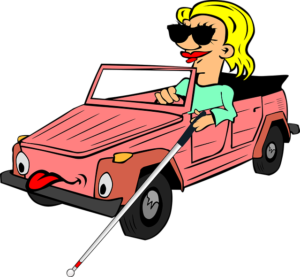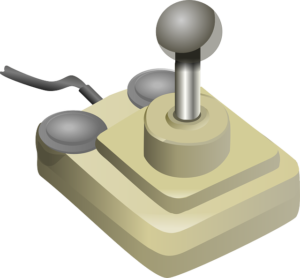The Meaning of Life
In 12 simple rules, written while on pain-killers
Seth Godwynn
As someone who has lived in this world for a time so long that I feel an increasingly burning desire for it to end, and who has wasted rather a lot of it giving really good advice to the needy many, it has often been suggested that I write some of the best advice down so I don’t have to keep remembering it in my variously compromised cognitive states.
So with that in mind, I have picked out 12 of the very best, and present them below in no particular order:

8) If a news headline makes you feel a strong negative emotion, stop reading

Marketers call this “priming”. I call it brainwashing. The process works like this:
When you are in a calm state, it is easy to look at things rationally. When you are in an agitated state, your animal brain kicks in and reacts emotionally, compromising your ability to draw rational conclusions. News articles are designed to put you in an agitated state right off the bat, because then they don’t have to bother writing a rationally based article. They can jump straight in with the emotional appeals that lead you to any conclusion they want you to arrive at. They will openly lie to your face in a way that is easily proven so with a bare minimum of research, and they will get away with it every time because you will defend the emotional core of their argument for them.
Once you see it happening, it is easy to build up mental defences: my go to defence is that as soon as something makes me feel agitated I tell myself I simply don’t care about the thing as it has no effect on me or my life. While this annoys my wife, it does provide instant calm. Beware though, for this is a box that cannot be closed. Once you see the truth and reject the narrative, you will be ostracised from civilised society permanently and you may find you have to become a professional writer
4) The term, “Cognitive Blind Spot” is misleadingly worded

When we think of a blind spot, we imagine being able to see about 99+% of what’s around us, with just a tiny area we can’t see that our brain fills in for us without us noticing. Brains are good at that sort of thing—mostly.
A cognitive blind spot rather follows the opposite pattern. The spot is the part that we can see, and it’s the other 99+% that we’re blind to, and that our brain just fills in without us noticing. This is why two people can be shown the exact same facts and then walk away drawing two completely opposing opinions from it as to what the fact means.
To use an analogy, imagine you have a 50,000 piece jigsaw puzzle, with no reference picture. You also only have 5 or 6 pieces, of which several come from completely different puzzles and you don’t know which ones. You look at it, and think, “Yeah, I can see the picture perfectly!”
That’s you, that is!
10) Simulation Theory is a place holder

We humans are creatures of context. A place for everything and everything in its place, and all that. This is why people in all societies throughout history have always formed religions. Religion puts a big comforting box around all of the greatest mysteries so that we understand what our place in it probably is, and then we don’t have to bother thinking about it anymore. It’s genius really, in a far less than genius way, because the box only needs to be good enough!
Increasingly of late, atheists have been embracing Simulation Theory, which is the stunningly original concept that the world we live in is really an artificial construct crafted by super-intelligent beings using technology way more advanced than anything we can conceive of. This is different from religion, because it involves mystical high tech rather than mystical magical beings, but it fills the same gap that’s otherwise filled with questions and ignorance.
If in doubt, always remember the parable of the pocket watch. A man walks down the street and he sees a pocket watch lying on the ground. Does he assume that the pieces gradually evolved into the many working mechanisms therein comprised of springs and cogs over countless millennia, or does he assume that an invisible spaceman from another dimension magicked it into reality and just left it there? Frankly, both are pretty insulting, so I would just ignore the watch and leave it for an atheist and a theist to argue over. I’m needed elsewhere, presumably, and presumably not at any fun parties.
3) Paper cuts don’t really hurt

Seriously, it’s 100% psychosomatic. You see how deep the cut is and all the blood coming out and you’re thinking, “Why doesn’t that hurt?” So your brain makes you start to feel the pain just so you’ll feel better about yourself.
There’s an important lesson in there to be learned: we are all stupid and our brains hate us. I find alcohol to be a fitting revenge. Take that, brain!
11) Never buy a consumer inkjet printer

These masterpieces of consumer technology have been painstakingly designed from the ground up to never work properly, refuse to connect to your computer (despite you installing all the drivers and turning it off and on again several times), to always have dried ink impede operations and have one colour ink finish up while the other three are practically full, rendering the entire cartridge useless.
I was at a bar once and I saw a table of men and women that looked like technicians and marketing reps having a drink together. From the way they were all laughing, I just knew that consumer inkjet printers were their business. It had a cruel and ruthless edge to it, the likes of which continue to haunt my waking dreams. It truly brought a chill to my spine.
2) Learn to Measure
When you’re making a cup of coffee, a scoop of beans is going to yield a very different quantity to a scoop of fresh grounds. So throw away those crude measuring scoops and cups, and invest in a decent set of kitchen scales, preferably accurate to 1/1000th of a gram. And, learn your ratios.
For coffee, the number to remember is 17. For every gram of coffee ground, you need 17.000 grams of water. So for a 500ml pot you’d need approximately 29.412 grams of coffee. The grounds soak up around a sixth of the water too, so don’t forget to augment your water supply by around 20%—give or take 0.042%. (And obviously by “water” I mean “hot water”—it feels strange I should even need to specify this.)
For Japanese rice, you need six parts water for every five parts rice, plus 5% if the rice is of the non-wash type. So for 1.500 “gō,” you need 225.000 grams of rice and 283.500 grams of water.
For brining meat, most choose a 7% brine, though I find 8% works better. That means 8.000 grams of salt for every 100.000 grams of water, not for every 92.000 as some could interpret it. If you’re using nitrite salts for curing, you also need to factor in the weight of the meat, the salt, and the nitrite salt itself.
As with life, you’ll quickly get the hang of it if you don’t overthink it!
1) That’s not a sandwich

You may think a sandwich is a generic term for any combination of bread and filling, but that’s like saying that all sparkling wine is Champagne, or that all white crusted soft-cheese is Camembert. No, a food item comprising two slices of bread and a filling of some sort may only be called a sandwich if it was made in East Kent. Otherwise, it’s correctly known as a “stuffed sustenance strata.”
It is also important to remember the one hand rule: if it cannot be eaten cleanly with one hand (sans wrapping), then that is not a sandwich either. This had the potential to bring Subway a whole new world of pain in terms of The Law™. Their casings are not legally “bread” according to Irish Consumer Standards, and it’s rather up in the air if their tuna could be lawfully categorized as “fish”. That their “sandwiches” are nothing o’ the sort seems to have gone under the radar, for the time being. At the very least, their products are never described as “food,” which would be a whole different can of worms. They are often described as a can of worms though, which Irish Consumer Standards are perfectly happy with because the specific species is listed on the ingredients.
But regardless of whether it’s a sandwich, a stuffed sustenance strata, a sloppy mess, or even a Subway… for an optimal experience try slicing it diagonally. This guarantees a more even distribution of filling per mouthful than all other cutting techniques. Also, this doesn’t work with a Subway.
7) If a can of pure fruit juice costs the same as a can of squash, buy the juice

I struggle to figure out why this is such a baffling concept to everyone. One of the vending machines at my office has a 350.000ml can of 100% orange juice (which is not the same as 350.000g of juice, because juice is heavier than water) and right next to it is a can the same size and price of orange squash that’s around 5% juice and 95% tap water, sugar, preservatives and other crap. Yet, I see people drinking the squash all the time and never the juice. I tried the juice once, and checked the ingredients: concentrated orange juice, water, flavour-enhancer, all as it should be. It passed the taste test too. But as I carried it back to my desk, I could sense the eyes following me, whispering hushed condemnations. “He bought the juice, to whom does he think he is? Squash not good enough for him?! Oooh, la di da!”
A den of fools I tell you. We’ll find out who was right at my next colonoscopy.
9) There IS such a thing as a free lunch

Soup kitchens are a good example. Some companies also provide lunches to their employees, which is not only free, but they actually pay you to eat it! (Say what?!)
5) If interviewing an au pair with a facial mole on a Tuesday, do not give them any sugar

Thrice will they ask, and thrice must they be denied. Stevia based sweeteners are usually OK in small doses though. In a pinch, broccoli is an acceptable substitute.
6) Never attempt to write comedy with a nerve-damaged dominant arm

It’s hard to find humour in your own witty wordplay, when each attempt to render them sends shooting pains up your arm, shoulder and neck. Seriously, I am not enjoying this at all. **** this **** all the way back to the ******* ******* *****hole it was ****** from!
12) ZEBRAS DO NOT MAKE GOOD HOUSE PETS

Sorry, hit the caps lock by accident there. ******* arm!
There was a TV show playing on the fridge the other day about exotic house pets. The presenters would walk into a room, and you see the expression on their faces when they see the animal. We don’t see it yet, of course—there are commercial messages to be enjoyed before that can happen. So, commercial messages subside, and we’re back outside the house again. The presenters enter the house, and we get a close up of their faces as they see the exotic animal, and… cut to the studio.
This time it’s the studio panel reacting to the animal that now THEY have seen, and we haven’t. And they’re getting paid for it. (Say what?!) Anyway, after a few more commercial messages via voiceover, we return to the panel who have now no longer seen the animal anymore, as they are instead open speculating on what the exotic animal could possibly be. Then we repeat the scene of the presenters walking into the house, reacting, the studio panel reacting, and cutting to another commercial break.
—I’m going to skip ahead a bit here, before it starts getting repetitive—
About half an hour passes and we eventually get to see the animal, and this whole time I’m thinking, I really hope this is a ******* zebra!
It was a snake. A ******* snake! That’s the best you can do? A zebra would have been much cooler. I mean, can you imagine coming home, you open your front door, and there’s a ******* zebra standing there looking at you? How weird would that be?
Well, if it was your pet, probably not all that weird at all. It would actually be more weird if there wasn’t a zebra standing in your living room, because you’d be, like, Dude, where’s my zebra?!
It also probably wouldn’t make a very good pet, now I think about it.
So there we have it, my 12 rules for life in no particular order. I hope that you find these as useful as I feel telling you them.
And remember—enjoy the broccoli!
Many thanks for reading this article. We hope it was interesting, informative and entertaining. Follow us on social media or share our content on your own pages. It helps us grow so we can create more free content to help you.
